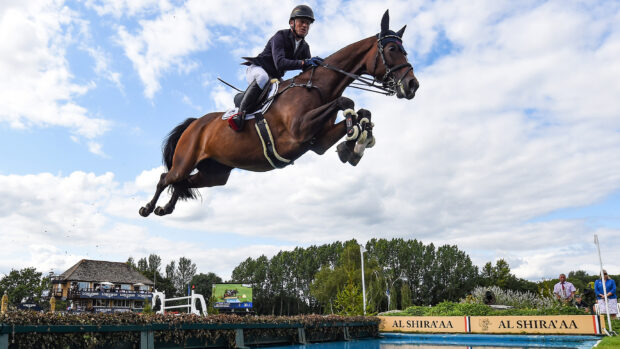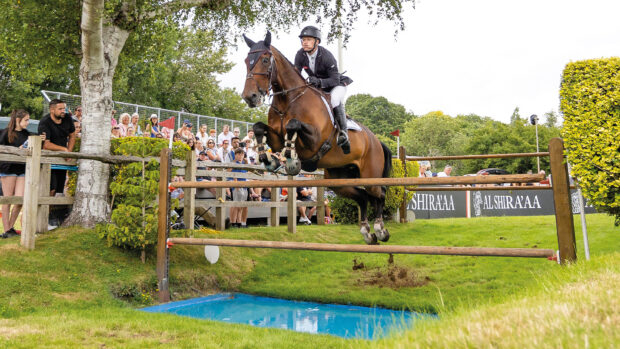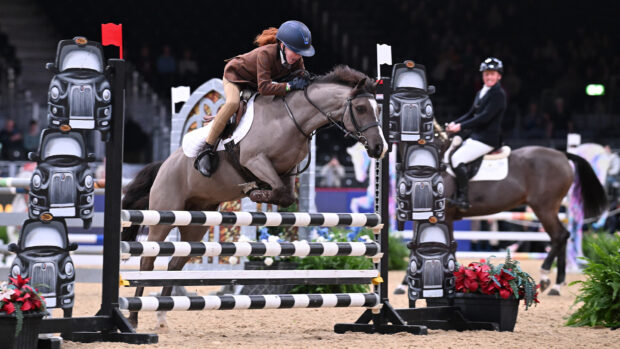As we roll into winter, every horse owner will be thinking about getting enough forage into their horse’s diet. Actually, we are probably always thinking about that. We are part of that rare subsection of the community who are borderline obsessed with, well — grass.
Like most, I have a regime regarding turnout and feeding, but I realised a lot of people still struggle with the “right balance” and so I decided to dissect it a little more.
Firstly, feeding hay — I have a lot of love for the Haygain hay steamer. Mine is slightly vintage these days, given we have had it 11 years, but it still absolutely does its job. I have the boiler regularly serviced and it’s one of those things, while a sizeable investment at the time, proves worth it if you take care of it. It must have well and truly paid for itself by now.
I used to buy big, round, wrapped bales to stuff nets with and then put the nets into the steamer, then empty nets on to the floor. While the bigger bales are slightly more cost effective, I decided to measure that against the time it was costing me to stuff the nets, so in the end, decided it was cheaper to buy small bales and pop them straight in the Haygain. It also meant I wasn’t having to find a way to recycle all the plastic wrap, which was a huge relief in terms of energy and my conscience.
The steamer kills any microtoxins and dissipates any dust, which is great for any horse but particularly for those with the sensitivities in general. I recently had cause to think a couple of mine weren’t quite right, and being able to eliminate even the smallest issues — like dust or toxins running through their internal organs was a great comfort and help in getting to the bottom of the issue.
I have always been a believer in feeding hay from the floor. I prefer them to be getting their heads and necks down, in a natural feeding position. However, I have always been fortunate to have horses who aren’t too bad at keeping it tidy (hay in the bed, anyone?) and who eat at a regular pace and don’t rush through it.
Until now.
I have now been blessed with the equine equivalent of a Dyson. He hoovers up that steamed loveliness like it is going out of fashion. He’s me as a child — spending the entire kids party standing at the sweets table, ignoring everyone and stuffing his face. So, I consulted all my experts and when they suggested using a small hole hay net, I got hold of a Trickle Net. It’s a product made by a British company, who have put a lot of effort into developing the healthiest way to feed from a net. It’s also been used in a lot of independent research into the same area.
I felt like a bad mummy when I started using it. It wasn’t that there was a lot of stroppiness about this new way of dinner being served, it just took him a while to figure out why he was dining à la carte as opposed to directly from the buffet. But figure it out he did. And the Trickle in Trickle Net could not be more appropriate. He just constantly munched. Slowly, steadily and easily. He wasn’t standing there hungry or bored, which meant a happy tummy and a vast improvement to his waistline. He is looking toned and terrific.
Then we come to the question of turnout. It is really different for everyone, because everyone has different restrictions they face. My lot are fair weather field lovers. When it is icy cold and wet, they have zero interest in being out there. This is fortunate as I do have to practice careful field management. I can’t afford to have them completely obliterate the fields in the muddy conditions, and then have nothing grow back in time for lovely long summer turnout days. However, I do try to get them out “being horses” in the winter — even for short periods — to have a roll and a sniff around.
Continued below…
Like this? You might also enjoy reading these:
While we all might be feeling a little de-motivated given the current pandemic, Camilla highlights how important it is to

Camilla Bingham’s showjumping blog: how to choose the right stay away show for you and your horse

Subscribe to Horse & Hound magazine today – and enjoy unlimited website access all year round
With a lack of grass and not a tremendous amount of goodness in what’s there anyway, we come back to that all-important feeding of forage. It’s a delicate balance between them getting enough and getting too much and I’m very glad that I’ll be heading into the hardest part of winter with a solution. However, it’s important to know that no matter what you’re able to offer your horses — if you’re doing the best you can with all the knowledge you can gather, who could ask for anything more.
Camilla
Horse & Hound magazine, out every Thursday, is packed with all the latest news and reports, as well as interviews, specials, nostalgia, vet and training advice. Find how you can enjoy the magazine delivered to your door every week, plus options to upgrade to access our H&H Plus online service which brings you breaking news as it happens as well as other benefits.



